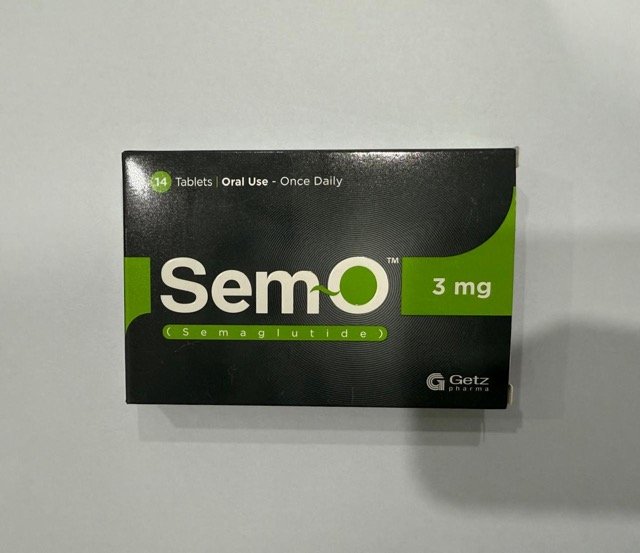Sodium phosphate is available as an enema (Fleet enema) for bowel preparation. It is also to replace phosphate in patients with hypophosphatemia.
Sodium phosphate Uses:
- Oral solution, rectal: Short-term treatment of constipation
- Oral tablets: Bowel cleansing prior to colonoscopy
- Source of phosphate in a large volume of IV fluids and parenteral nutrition; for treatment and prevention of hypophosphatemia
Sodium phosphate Dose in Adults
Note:
- If phosphate repletion is required and there is no phosphate product available at your institution, the use of sodium glycerophosphate pentahydrate (Glycophos) can be used as a suitable substitute.
- Concentrations and dosage are different from FDA-approved products; use caution when converting between products.
- Refer to Sodium Glycerophosphate Pentahydrate monograph.
Caution:
- For IV phosphate, there is significant confusion associated with the use of millimoles (mmol) versus milliequivalents (mEq) to express the required phosphate.
- The most accurate way of ordering IV phosphate is by millimoles, then specifying the potassium or sodium salt. Intravenous doses listed as mmol of phosphate.
Sodium phosphate Dose in the treatment of Acute treatment of hypophosphatemia:
- It is difficult to provide concrete guidelines for the treatment of severe hypophosphatemia by the IV route because of the extent of total body deficits and response to therapy can't be easily predicted.
- Replacement by Aggressive doses of phosphate may result in a transient serum rise followed by redistribution into intracellular compartments or bone tissue.
- It is recommended that the replacement of severe hypophosphatemia be done by the IV route because large doses of oral phosphate may cause diarrhea and intestinal absorption may be unreliable.
- Intermittent IV infusion should be reserved for severe depletion situations; requires continuous cardiac monitoring.
- Guidelines vary based upon the degree of illness, need/use of TPN, and severity of hypophosphatemia.
- If hypokalemia exists (some clinicians recommend a threshold of <4 mmol/L), consider phosphate replacement strategy with potassium (eg, potassium phosphates).
- Obese patients and/or severe renal impairment were excluded from phosphate supplement trials.
-
Note:
- 1 mmol phosphate = 31 mg phosphorus;
- 1 mg phosphorus = 0.032 mmol phosphate.
Sodium phosphate Dose in Critically ill adult patients receiving concurrent enteral/parenteral nutrition:
- Note:
- Round doses to the nearest 7.5 mmol for ease of preparation.
- If administering with phosphate-containing parenteral nutrition, do not exceed 15 mmol/L within parenteral nutrition.
- May use adjusted body weight for patients weighing >130% of ideal body weight (and BMI <40 kg/m ) by using [IBW + 0.25 (ABW-IBW)]:
-
Low dose, serum phosphorus level 2.3 to 3 mg/dL (0.74 to 0.96 mmol/L):
- 0.16 to 0.32 mmol/kg over 4 to 6 hours
-
Intermediate dose, serum phosphorus level 1.6 to 2.2 mg/dL (0.51 to 0.71 mmol/L):
- 0.32 to 0.64 mmol/kg over 4 to 6 hours
-
High dose, serum phosphorus <1.5 mg/dL (<0.5 mmol/L):
- 0.64 to 1 mmol/kg over 8 to 12 hours
Sodium phosphate Dose as Parenteral nutrition:
-
IV:
- 10 to 15 mmol/1,000 kcal (Hicks 2001) or 20 to 40 mmol/24 hours (Mirtallo 2004 [ASPEN guidelines])
-
Laxative (Fleet):
- Rectal: Contents of one 4.5 oz enema as a single dose
-
Laxative:
- Oral solution: 15 mL as a single dose; maximum single daily dose: 45 mL
Sodium phosphate Dose in the treatment of Bowel cleansing prior to colonoscopy: Oral tablets:
- Note:
- Do not use additional laxatives, especially other sodium phosphate products.
- A minimum of 7 days should elapse prior to repeating use.
-
OsmoPrep:
- A total of 32 tablets and 2 quarts of clear liquids (8 ounces of clear liquids with each dose) divided as follows:
-
The evening before colonoscopy:
- 4 tablets every 15 minutes for 5 doses (total of 20 tablets)
-
3 to 5 hours prior to colonoscopy:
- 4 tablets every 15 minutes for 3 doses (total of 12 tablets)
Sodium phosphate Dose in Childrens
Note:
- If phosphate repletion is required and a phosphate product is not available at your institution, consider the use of sodium glycerophosphate pentahydrate (Glycophos) as a suitable substitute.
- Concentration and dosing are different from FDA approved products; use caution when switching between products.
- Refer to sodium glycerophosphate pentahydrate monograph.
Caution:
- With orders for IV phosphate, there is considerable confusion associated with the use of millimoles (mmol) versus milliequivalents (mEq) to express the phosphate requirement.
- The most reliable method of ordering IV phosphate is by millimoles, then specifying the potassium or sodium salt. Intravenous doses listed as mmol of phosphate.
- Note: Consider the contribution of sodium when determining the appropriate phosphate replacement.
Phosphorus − Recommended Daily Allowance (RDA) and Estimated Average Requirement (EAR)
| Age | RDA (mmol/day) | EAR (mmol/day) |
| 1-6 mo | - | 3.2 |
| 7-12 mo | - | 8.9 |
| 1-3 y | 14.8 | 12.3 |
| 4-8 y | 16.1 | 13.1 |
| 9-18 y | 40.3 | 34 |
| 19-30 y | 22.6 | 18.7 |
| Adequate intake (AI) | ||
Sodium phosphate Dose in the treatment of acute Hypophosphatemia:
- Hypophosphatemia does not necessarily equate with phosphate depletion.
- Hypophosphatemia may occur even in the presence of low, normal, or high total body phosphate and conversely, body phosphate depletion may be there with normal, low, or elevated levels of serum phosphate.
- Providing concrete guidelines for the treatment of severe hypophosphatemia is difficult because the extent of total body deficits and response to therapy is not easy to predict.
- Aggressive doses of phosphate may result in a transient serum rise of phosphate followed by redistribution into intracellular compartments or bone tissue.
- Intermittent IV infusion should be reserved for severe depletion situations; requires continuous cardiac monitoring. Guidelines vary based upon the degree of illness, need/use of TPN, and severity of hypophosphatemia.
- If hypokalemia is present, think of phosphate replacement strategy with potassium (eg, potassium phosphates).
- Various regimens for phosphate replacement in adults have been evaluated.
- The below regimens have only been studied in the adult population; however, many institutions have used them in children safely and successfully.
- Obese patients and/or severe renal impairment were not included in phosphate supplement trials.
-
Note:
- 1mmol of phosphate = 31mg of phosphorus;
- 1mg of phosphorus = 0.032mmol phosphate.
- IV doses may be mixed into the patient's maintenance IV fluids;
- intermittent IV infusion should be reserved for cases of severe depletion situations.
Note: Doses listed as mmol of phosphate.
-
Children and Adolescents:
Note:
- There are no prospective studies of parenteral phosphate replacement in pediatric patients.
- The following weight-based guidelines for adult dosing may be cautiously applied in children's patients.
- Guidelines varied based upon the degree of illness, use of TPN, and severity of hypophosphatemia.
-
Sodium phosphate General replacement guidelines:
-
- Note: The initial dose may be increased by 25% to 50% if the patient is symptomatic due to hypophosphatemia and may be lowered by 25% to 50% if the patient is hypercalcemic.
-
Low dose:
- 08 mmol/kg over 6 hours;
- use if losses are recent and uncomplicated
-
Intermediate dose:
- 16 to 0.24 mmol/kg over 4 to 6 hours;
- use if serum phosphorus level 0.5 to 1 mg/dL (0.16 to 0.32 mmol/L)
-
High dose:
- 36 mmol/kg over 6 hours;
- use if serum phosphorus <0.5 mg/dL (<0.16 mmol/L)
-
-
Patients receiving TPN (Clark 1995):
-
Low dose:
- 16 mmol/kg over 4 to 6 hours;
- use if serum phosphorus level 2.3 to 3 mg/dL (0.73 to 0.96 mmol/L)
-
Intermediate dose:
- 32 mmol/kg over 4 to 6 hours;
- use if serum phosphorus level 1.6 to 2.2 mg/dL (0.51 to 0.72 mmol/L)
-
High dose:
- 64 mmol/kg over 8 to 12 hours;
- use if serum phosphorus <1.5 mg/dL (<0.5 mmol/L)
-
-
Critically ill adult trauma patients receiving TPN (Brown 2006):
-
Low dose:
- 32 mmol/kg over 4 to 6 hours;
- use if serum phosphorus level 2.3 to 3 mg/dL (0.73 to 0.96 mmol/L)
-
Intermediate dose:
- 64 mmol/kg over 4 to 6 hours;
- use if serum phosphorus level 1.6 to 2.2 mg/dL (0.51 to 0.72 mmol/L)
-
High dose:
- 1 mmol/kg over 8 to 12 hours;
- use if serum phosphorus <1.5 mg/dL (<0.5 mmol/L)
-
-
An alternative method in critically ill patients (Kingston 1985):
-
Low dose:
- 25 mmol/kg over 4 hours; use if serum phosphorus level 0.5 to 1 mg/dL (0.16 to 0.32 mmol/L)
-
Moderate dose:
- 5 mmol/kg over 4 hours; use if serum phosphorus level <0.5 mg/dL (<0.16 mmol/L)
-
Sodium phosphate Dose as Parenteral nutrition, maintenance requirement:
-
Infants and Children ≤50 kg:
- 5 to 2 mmol/kg/day IV
-
Children >50 kg and Adolescents:
- 10 to 40 mmol/day IV
Sodium phosphate Dose in the treatment of Constipation:
-
Oral, solution (Monobasic sodium phosphate monohydrate 2.4 g and dibasic sodium phosphate heptahydrate 0.9 g per 5 mL):
-
Note: Must be diluted in a full glass of water:
-
Children 5 to 9 years:
- 5 mL as a single dose
-
Children 10 to 11 years:
- 15 mL as a single dose
-
Children ≥12 years and Adolescents:
- 15 mL as a single dose; maximum single daily dose: 45 mL/day
-
-
Rectal: Fleet Enema:
-
Children 2 to 4 years:
- Administer one-half contents of one 2.25-ounce pediatric enema
-
Children 5 to 11 years:
- Administer the contents of one 2.25-ounce pediatric enema
-
Children ≥12 years and Adolescents:
- Administer the contents of one 4.5-ounce enema as a single dose
-
Pregnancy Risk Category: C
- These products have not been subject to reproduction studies.
- Pregnant women should be cautious
Use of sodium phosphate during breastfeeding
- Human milk contains normal amounts of phosphate, sodium, potassium.
- According to the manufacturer of the product, when deciding whether to continue or stop breastfeeding during therapy, it should consider the risks to infant exposure, the benefits to the infant and the benefits to the mother.
Sodium phosphate Dose in Kidney Disease:
-
IV:
- There are no specific dosage adjustments provided in the manufacturer's labeling.
- However, because ionized inorganic phosphate is excreted by the kidneys, use with caution in patients with impaired renal function.
-
Oral:
- There are no specific dosage adjustments provided in the manufacturer's labeling for the oral tablets.
- However, because ionized inorganic phosphate is excreted by the kidneys, use with caution when used for bowel cleansing prior to the colonoscopy, particularly in patients with severe impairment (CrCl <30 mL/minute).
- The use of the oral solution (OTC product for constipation) should be avoided in patients with impaired renal function.
-
Rectal:
- There are no dosage adjustments provided in the manufacturer's labeling.
- However, because ionized inorganic phosphate is excreted by the kidneys, use with caution in patients with impaired renal function.
Sodium phosphate Dose in Liver disease:
- There are no dosage adjustments provided in the drug manufacturer's labeling.
Common Side Effects of Sodium phosphate:
-
Gastrointestinal:
- Bloating
- Nausea
- Abdominal pain
-
Endocrine & metabolic:
- Hyperphosphatemia
- Hypokalemia
Less Common Side Effects of Sodium phosphate:
-
Gastrointestinal:
- Vomiting
- Aphthous stomatitis
Contraindications to Sodium phosphate:
Hypersensitivity/Allergy to sodium phosphate salts or any component of the formulation; additional contraindications vary by-product:
-
Intravenous preparation
- Hyperphosphatemia, hypocalcemia or hypernatremia are all possible.
-
Tablets
- Acute phosphate deficiency, bowel obstruction, perforation, gastric bypass, stapling surgery or toxic colitis, and megacolon are all possible.
-
OTC labeling (Oral Solution).
- Self-medication
- Dehydration, heart failure, renal disorders, electrolyte abnormalities;
- Use in children under 5 years old for bowel cleansing
- Self-medication
Warnings and precautions
-
Hypersensitivity
- There have been reports of serious reactions including anaphylaxis.
-
Nephropathy: [US-Boxed Warning]
- Acute phosphate neuropathy (APN), has been rarely reported with the use oral products prior to colonoscopy.
- Some cases resulted permanent renal impairment, some requiring dialysis.
- Acute phosphate nephropathy is a condition that can be caused by >55 years old, preexisting renal impairments, active colitis and bowel obstruction.
- Also, the use of medications that affect renal perfusion and function, such as ACE inhibitors and ARBs, diuretics and possibly NSAIDs may increase the risk.
- However, some cases have been reported in patients with no apparent risk factors.
- Patients should be informed about the importance to follow the recommended dosage regimen.
- Do not use any sodium phosphate-based purgatives or enema products.
- Collect baseline and post-procedure laboratory results from patients at high risk for nephropathy.
- Consider hospitalization and intravenous Hydration for patients who are unable to hydrate (eg frail patients).
- In acute phosphate renalpathy, use is not recommended.
- APN can also be observed (rarely) following sodium phosphate-enemas' usage.
- This was primarily done in elderly patients with preexisting renal disease and those who received standard doses and doses greater than usual.
-
Extension of QT
- Hypokalemia and hypocalcemia have been associated with a prolongation of the QT interval.
-
Cardiovascular:
- Patients with heart disease, unstable angina, myocardial and/or cardiomyopathy, or patients who have had heart surgery should be cautious.
- use caution in patients with or at risk for arrhythmias (eg, cardiomyopathy, prolonged QT interval, history of uncontrolled arrhythmias, recent MI) or with concurrent use of other QT-prolonging medications;
- High-risk patients should consider pre-/post-dose ECGs and laboratory tests.
-
Electrolyte disturbances:
- It is possible to experience electrolyte and fluid disturbances.
- Patients with electrolyte imbalances or dehydration (hypocalcemia/hypophosphatemia, hypernatremia) should be cautious.
- High-risk patients may need to have baseline and post-procedure labs.
- Before using for bowel preparations, ensure that you have properly dehydrated.
-
GI disorders
- You should exercise caution when using any of these:
- Gastric retention, hypomotility, gastric retention, ileus or severe active ulcerative bowel disease are all possible.
- Patients with bowel obstruction (including pseudo), perforation, congenital Megacolon, gastric bypass, bariatric surgery, toxic megacolon or toxic colitis are not advised to use this medication.
- You should exercise caution when using any of these:
-
Inflammatory bowel disease
- Acute exacerbation or chronic inflammatory bowel diseases should be treated with caution. Phosphate absorption can increase.
- Patients with IBD may experience aphthous colonic ulceration from oral sodium phosphate products.
-
Renal impairment
- Patients with renal impairment should exercise caution as they may be at high risk of sodium retention or edema.
- Hyperphosphatemia must be avoided by close monitoring
- Patients with severe renal impairment should have baseline and post-procedure lab results.
-
Seizure disorder:
- Patients with seizure history, patients at greater risk or those on medication that lowers the seizure threshold should be cautious.
- High-risk patients should have baseline and post-procedure labs.
Monitoring parameters:
-
IV:
- Serum calcium,
- sodium and phosphorus levels;
- renal function;
- after IV phosphate repletion, repeat serum phosphorus level should be checked 2-4 hours later
-
Oral:
- Bowel cleansing:
- Baseline and post-procedure labs (electrolytes, calcium, phosphorus, BUN, creatinine) in patients with renal impairment or who are taking medications or with conditions that increase the risk of fluid and electrolyte abnormalities, seizures, arrhythmias, or renal impairment;
- ECG in patients with risks for prolonged QT or arrhythmias.
- Ensure euvolemia before initiating bowel preparation.
- Bowel cleansing:
How to administer Sodium phosphate?
-
IV:
- Infuse intermittently with IV fluids;
- Don't give IV push.
- Before parenteral administration, must be dilute.
- The dose, infusion rate, and concentration of the infusion will vary depending on the patient's condition and institution policy.
- Patients with severe hypophosphatemia (ie, >1.5 mg/dL) may be administered at rates of up to 15 mmol/hour.
- Patients with kidney dysfunction and/or hypophosphatemia are advised to slow down their administration (eg over 4 to 6 hours) and to take oral repletion.
-
Bowel cleansing (oral tablets):
- Before and during the administration of tablets, a clear liquid diet is recommended.
- With each dose of sodiumphosphate, have the patient consume 8 ounces clear liquids
- Before and after colonoscopy, ensure that the patient is hydrated.
- Clear liquids can include water, flavored waters, pulp-free lemonade or ginger ale.
- Avoid alcohol, milk and purple-colored liquids as well as pulp-containing foods/liquids.
- Do not use any other laxatives for bowel cleansing. Also, do not administer oral medication within one hour of each bowel-cleansing tablet.
- Additional administration instructions can be found in the medication guide and manufacturer's labels.
-
Oral solution for constipation
- Start with an empty stomach. Take 8 ounces of cool water to dilute the dose. Then, add 8 ounces of water to the mixture.
do not repeat the dose within 24 hours
Mechanism of action of Sodium phosphate:
- Phosphorus is used as a laxative and draws water into the small intestine.
- This causes distention, promotes peristalsis, and encourages evacuation.
The onset of action:
- Cathartic: 3 to 6 hours;
- Rectal: 2 to 5 minutes
Absorption:
- Oral: ~1% to 20%
Excretion:
- Oral forms excreted in feces; IV forms are excreted in the urine with over 80% to 90% of dose reabsorbed by the kidney
International Brands of Sodium phosphate:
- Fleet Enema Extra
- Fleet Enema
- Fleet Pedia-Lax Enema
- LaCrosse Complete
- OsmoPrep
Sodium Phosphate Brand Names in Pakistan:
Sodium Phosphate Enema 7.2 g/120ml |
|
| Enema | Euro Pharma International |
| Instant Enema | Krka-Pak Pharmaceutical & Chemical Works |
| Prime Enema | Prime Labs. (Pvt) Ltd. |
| Radi Enema | Lisko Pakistan (Pvt) Ltd |
| Rapid Enema | Polyfine Chempharma (Pvt) Ltd. |
Sodium Phosphate Paste 1.13 g |
|
| Gingilacer | Himont Pharmaceuticals (Pvt) Ltd. |



.jpeg)



